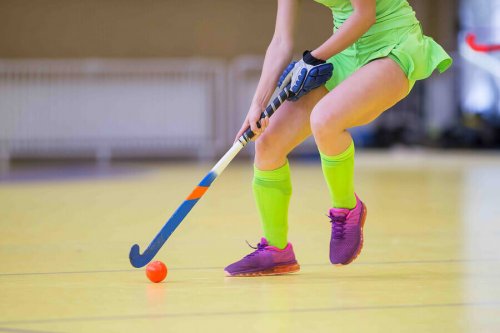How do Sports Association Regulations Work?

You’ve probably heard people talk about different types of sports associations? There are soccer clubs and sports federations, just to name a couple. Nevertheless, there are huge differences among them in terms of management. They also each have different functions. It’s important to understand this before we talk about sports association regulations.
That’s why it’s important for us to talk about sports law in this article. We’ll also cover some of its considerations with regard to the various types of sporting associations that currently exist.
Sports and sports association law in Spain
Let’s talk about the legal framework in which sports groups and associations exist in Spain. In order to do this, you need to take a look at the Sports Law (Law 10/1990) of October 15th, 1990. Specifically, you’re going to have to read down to Article 13 of Title III. Here, the law defined the characteristics that identify each of the sports associations in Spain.

According to the aforementioned Article 12, the law recognizes the following types of sports associations in Spain:
- Sports clubs.
- Entities that promote sport among state organizations.
- Professional leagues.
- Spanish sports federations.
We’re going to be looking at these from a legal perspective. That is, we’re going to be looking at the legal character that the judicial system attributes to each of these sporting associations. We’ll also be looking at their functions within the structure and management of sports in Spain.
Sports clubs: what are they and what do they do?
The Sports Law considers sports clubs to be private associations made up of physical and legal persons. Their principal objective is the promotion of particular sports. This is also the business the associates deal in.
Likewise, another advantage of these associations is that they can stimulate the associates to do certain things. They can, for example, drive them to participate in different sports competitions and events. These could even be events on a national or international level. The law further divides the sports associations contained in this category into three large groups:
- Elementary sports clubs.
- Basic sports clubs.
- Sports corporations (SAD): these are commercial companies with their own juridical identity. They divide their business capital into shares and they’re composed of contributions from the associates. The SADs function under a limited liability model.
Entities that promote state-level sports
These sports promotion entities are regulated as sports associations at a state level. You could say that their implementation is supra-autonomous. Here, the law includes entities and sports clubs with activities that primarily entail promoting sporting practices. This promotion should be for social, training, or recreational purposes. In other words, they don’t participate in official sports competitions.

The Sports Law says that a state-level sports promotion entity needs to fulfill the following requirements in order to receive recognition:
- It should not operate for profit.
- These entities should also have full autonomy. This autonomy should also free them from any other economic, corporate, political, or religious organization.
- It should prove its organized presence in at least six autonomous communities.
- The entity should demonstrate a minimum of 100 sports entities or associations inscribed in the corresponding autonomous registers.
- They should have a minimum of 20,000 associates among the associations that intend to join into it.
- Such entities should present the documentation the law requires. This documentation is similar to that of a sports association or federation. Among the documents the authorities require, the most important is their notarized articles of confederation. There should also be an approval of the statues with a minimum content in accordance with that established in Article 42 of Law 10/1990.
Sports associations in Spain: the professional leagues
Professional leagues in Spain are also associated with sports federations. Their structure must also include all of the sports clubs or companies that participate in official competitions. This includes competitions of a professional nature at a state level.
The Sports Law dictates that professional leagues also have their own specific juridical identity. It also recognizes their organizational and foundational autonomy with regard to national federations.
This is how these leagues have the authority to organize their own competitions. They may do this in coordination with their respective federations. Nevertheless, they have to respect the limits set by mutual agreement or by the Superior Sports Council (CSD).
Spanish sports association regulations
Spanish sports association regulations consider sports associations to be private entities with their own legal character. Their field of operations should also be the entire territory of the state. Their structure is comprised of different associations and other entities involved in national sports. Some examples of these are:
- Autonomous sports federations.
- Sports clubs.
- Athletes/sportspeople.
- Coaches and members of the coaching staff.
- Judges and referees.
- All collaborators and groups also directly associated with sports.
In closing, the Sports Law has established the foundations for forming said federations. Despite that, it also stipulates that autonomous communities have the necessary authority to take these matters into their own hands. They can define and regulate the legal framework they’ll use for the federations that people register within their territories.
You’ve probably heard people talk about different types of sports associations? There are soccer clubs and sports federations, just to name a couple. Nevertheless, there are huge differences among them in terms of management. They also each have different functions. It’s important to understand this before we talk about sports association regulations.
That’s why it’s important for us to talk about sports law in this article. We’ll also cover some of its considerations with regard to the various types of sporting associations that currently exist.
Sports and sports association law in Spain
Let’s talk about the legal framework in which sports groups and associations exist in Spain. In order to do this, you need to take a look at the Sports Law (Law 10/1990) of October 15th, 1990. Specifically, you’re going to have to read down to Article 13 of Title III. Here, the law defined the characteristics that identify each of the sports associations in Spain.

According to the aforementioned Article 12, the law recognizes the following types of sports associations in Spain:
- Sports clubs.
- Entities that promote sport among state organizations.
- Professional leagues.
- Spanish sports federations.
We’re going to be looking at these from a legal perspective. That is, we’re going to be looking at the legal character that the judicial system attributes to each of these sporting associations. We’ll also be looking at their functions within the structure and management of sports in Spain.
Sports clubs: what are they and what do they do?
The Sports Law considers sports clubs to be private associations made up of physical and legal persons. Their principal objective is the promotion of particular sports. This is also the business the associates deal in.
Likewise, another advantage of these associations is that they can stimulate the associates to do certain things. They can, for example, drive them to participate in different sports competitions and events. These could even be events on a national or international level. The law further divides the sports associations contained in this category into three large groups:
- Elementary sports clubs.
- Basic sports clubs.
- Sports corporations (SAD): these are commercial companies with their own juridical identity. They divide their business capital into shares and they’re composed of contributions from the associates. The SADs function under a limited liability model.
Entities that promote state-level sports
These sports promotion entities are regulated as sports associations at a state level. You could say that their implementation is supra-autonomous. Here, the law includes entities and sports clubs with activities that primarily entail promoting sporting practices. This promotion should be for social, training, or recreational purposes. In other words, they don’t participate in official sports competitions.

The Sports Law says that a state-level sports promotion entity needs to fulfill the following requirements in order to receive recognition:
- It should not operate for profit.
- These entities should also have full autonomy. This autonomy should also free them from any other economic, corporate, political, or religious organization.
- It should prove its organized presence in at least six autonomous communities.
- The entity should demonstrate a minimum of 100 sports entities or associations inscribed in the corresponding autonomous registers.
- They should have a minimum of 20,000 associates among the associations that intend to join into it.
- Such entities should present the documentation the law requires. This documentation is similar to that of a sports association or federation. Among the documents the authorities require, the most important is their notarized articles of confederation. There should also be an approval of the statues with a minimum content in accordance with that established in Article 42 of Law 10/1990.
Sports associations in Spain: the professional leagues
Professional leagues in Spain are also associated with sports federations. Their structure must also include all of the sports clubs or companies that participate in official competitions. This includes competitions of a professional nature at a state level.
The Sports Law dictates that professional leagues also have their own specific juridical identity. It also recognizes their organizational and foundational autonomy with regard to national federations.
This is how these leagues have the authority to organize their own competitions. They may do this in coordination with their respective federations. Nevertheless, they have to respect the limits set by mutual agreement or by the Superior Sports Council (CSD).
Spanish sports association regulations
Spanish sports association regulations consider sports associations to be private entities with their own legal character. Their field of operations should also be the entire territory of the state. Their structure is comprised of different associations and other entities involved in national sports. Some examples of these are:
- Autonomous sports federations.
- Sports clubs.
- Athletes/sportspeople.
- Coaches and members of the coaching staff.
- Judges and referees.
- All collaborators and groups also directly associated with sports.
In closing, the Sports Law has established the foundations for forming said federations. Despite that, it also stipulates that autonomous communities have the necessary authority to take these matters into their own hands. They can define and regulate the legal framework they’ll use for the federations that people register within their territories.
All cited sources were thoroughly reviewed by our team to ensure their quality, reliability, currency, and validity. The bibliography of this article was considered reliable and of academic or scientific accuracy.
- Ley 10/1990, de 15 de octubre, del Deporte. Extraído de: https://www.boe.es/buscar/pdf/1990/BOE-A-1990-25037-consolidado.pdf
- Consejo Superior de Deportes. Extraído de: https://www.csd.gob.es/es
This text is provided for informational purposes only and does not replace consultation with a professional. If in doubt, consult your specialist.








